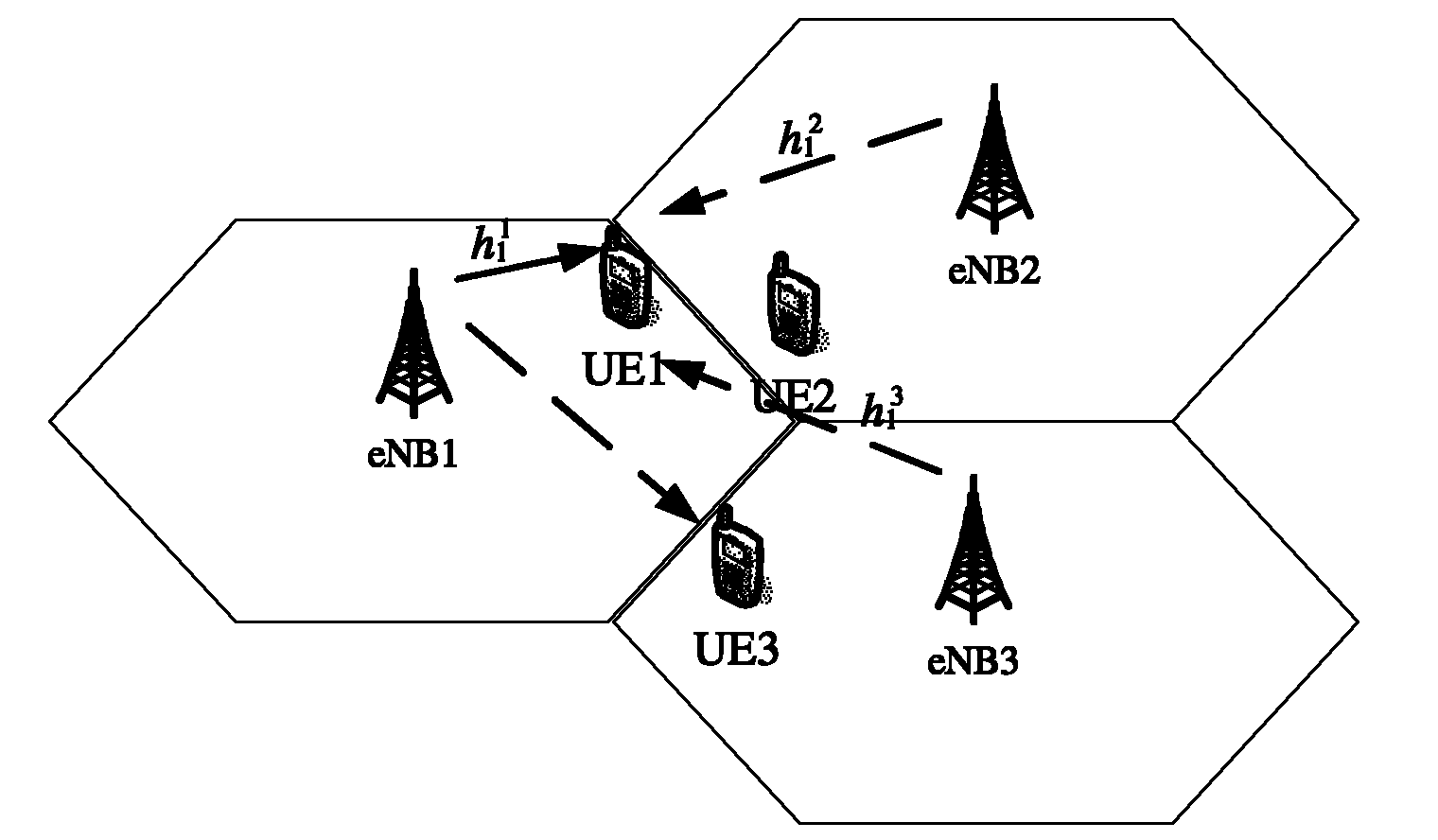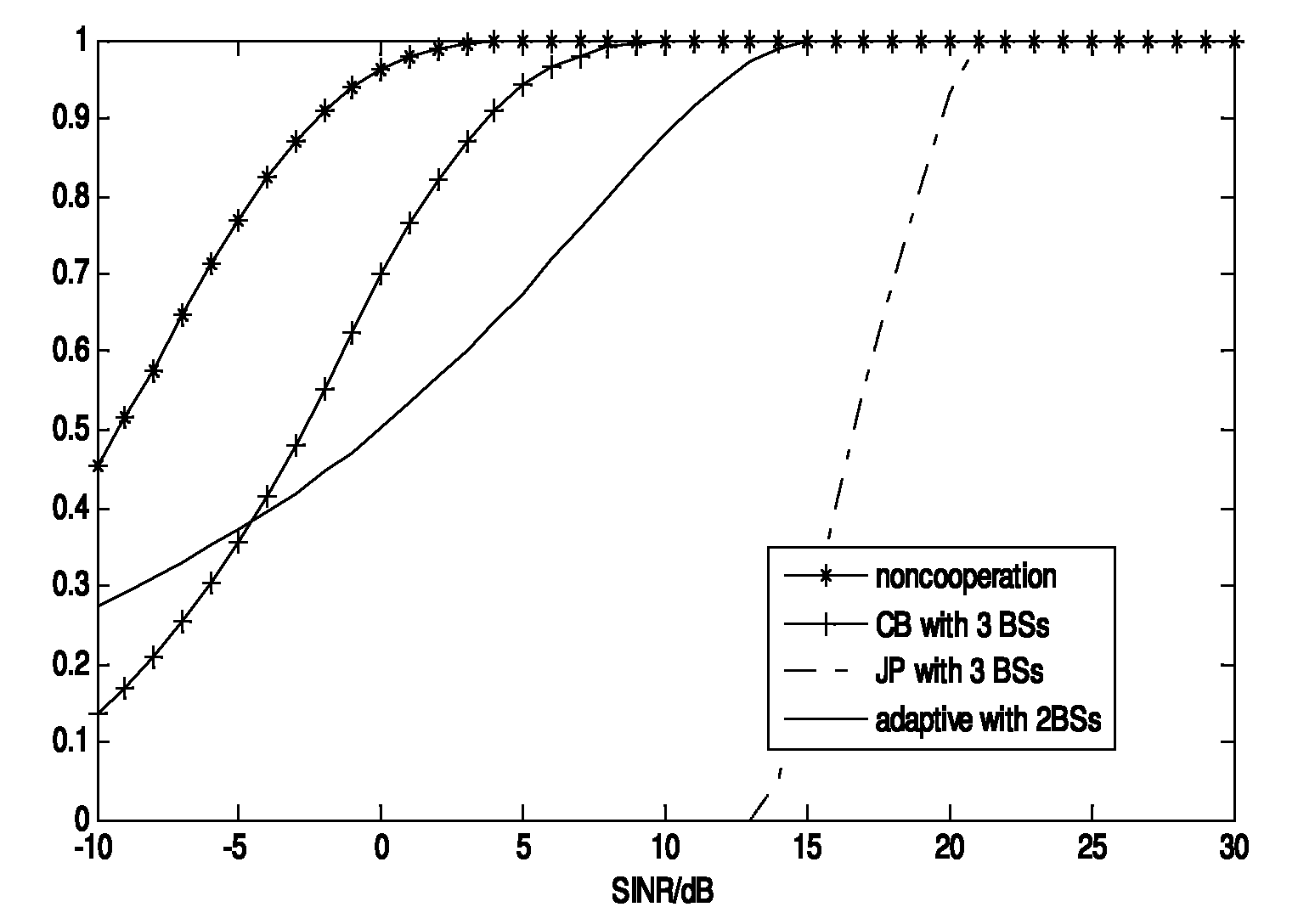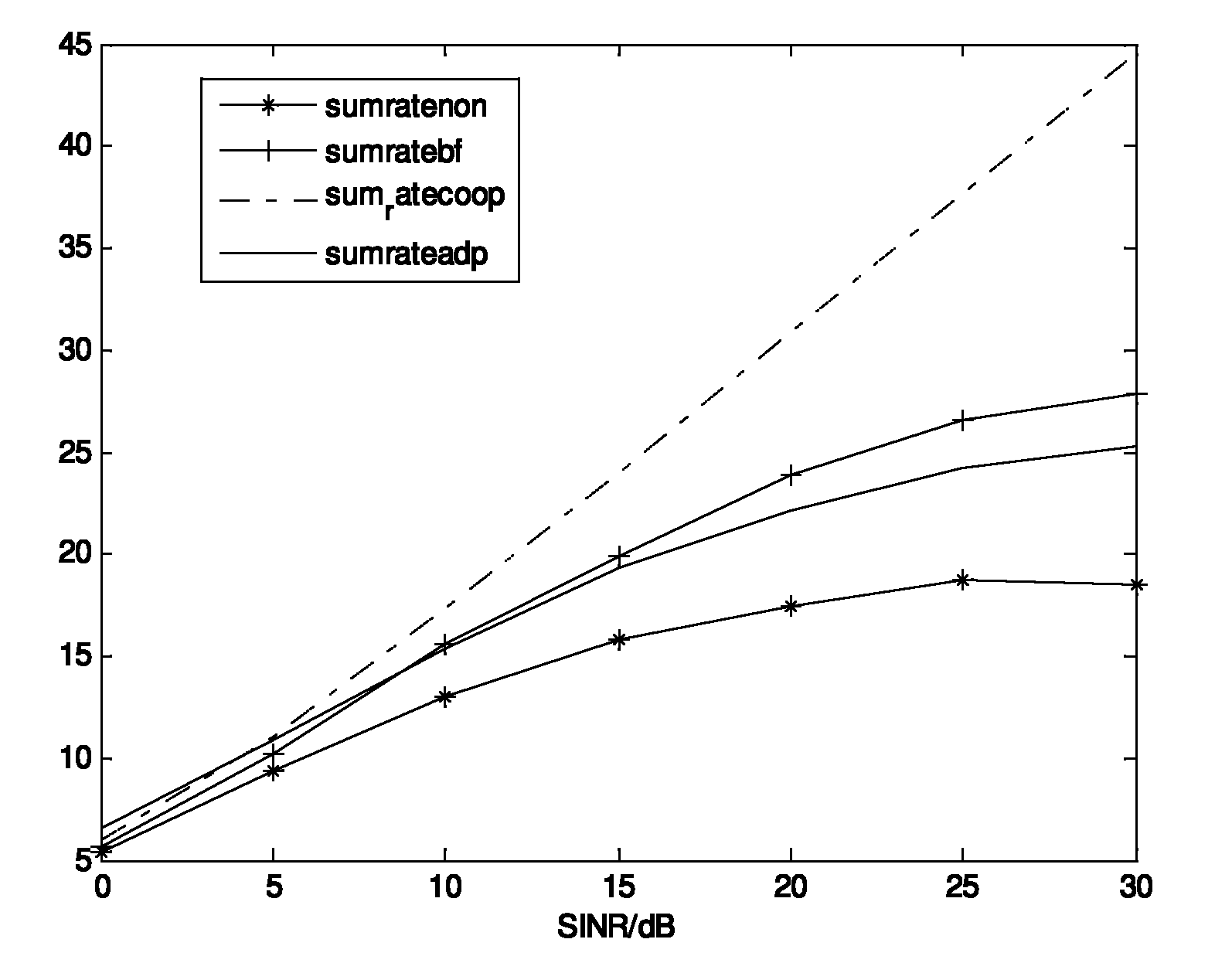Method for optimizing beam forming matrix for multi-base station collaboration system
A beamforming matrix and cooperative system technology, applied in diversity/multi-antenna systems, space transmit diversity, preventing/detecting errors through diversity reception, etc., can solve problems such as considering cooperative processing methods and affecting system performance
- Summary
- Abstract
- Description
- Claims
- Application Information
AI Technical Summary
Problems solved by technology
Method used
Image
Examples
Embodiment 1
[0063] Such as figure 2 shown, for figure 2 The figure shows that in the multi-base station cooperative system, the number of base stations is 3, each base station uses 4 antennas, each cell randomly distributes 2 users, each user uses 1 antenna, and the number of data streams for each user is 1. Under the condition that the signal-to-noise ratio is 15dB, the statistical distribution of the number of users of the signal-to-dry ratio varies with the power, and the simulation compares the multi-cell system with no coordination between cells and the multi-cell system with coordinated beamforming technology between base stations. And the statistical distribution of the instantaneous sinr of the system users using the joint transmission technology between base stations. For the cooperative selection method between base stations proposed in the present invention, by figure 2 It can be seen that although the selection method proposed by the present invention is limited by the nu...
Embodiment 2
[0065] Such as image 3 As shown, the number of base stations in the multi-base station cooperative system is 3, each base station uses 4 antennas, each cell randomly distributes 2 users, each user uses 1 antenna, and the number of data streams for each user is 1. The average capacity of the system varies with power, and the system capacity of the multi-cell system with no coordination between cells, the multi-cell system with coordinated beamforming technology between base stations, and the system with joint transmission technology between base stations is compared by simulation. For the selection method of the cooperation mode between base stations of the present invention, by image 3 It can be seen that the algorithm proposed by the present invention has lower system capacity than the cooperative algorithm based on all base stations participating, but when the signal-to-noise ratio is small, the present invention has better system capacity than the coordinated algorithm ob...
PUM
 Login to View More
Login to View More Abstract
Description
Claims
Application Information
 Login to View More
Login to View More - R&D
- Intellectual Property
- Life Sciences
- Materials
- Tech Scout
- Unparalleled Data Quality
- Higher Quality Content
- 60% Fewer Hallucinations
Browse by: Latest US Patents, China's latest patents, Technical Efficacy Thesaurus, Application Domain, Technology Topic, Popular Technical Reports.
© 2025 PatSnap. All rights reserved.Legal|Privacy policy|Modern Slavery Act Transparency Statement|Sitemap|About US| Contact US: help@patsnap.com



